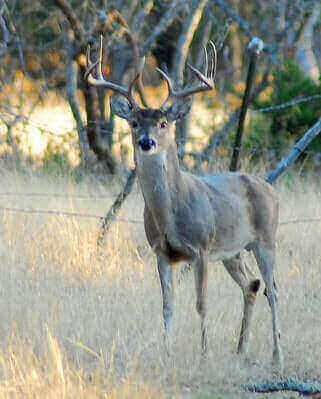Disclosure: We may earn commissions if you purchase products after clicking on a link from our site.
You scouted the buck, studied his movements and behaviors, got in your spot, and waited patiently for him. The moment arrived and you took a good shot or thought you did. It did not drop dead in its tracks.
Surprisingly, he took off like a kite in the wind. Now it dawned on you that you will have to track him after taking a good shot. Do you have the knowledge and skills on how to track deer after the shot? In this article, we discuss how to track a wounded deer.
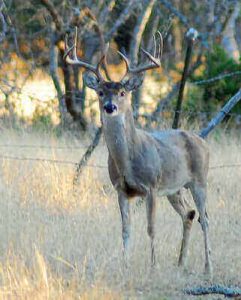
Table of Contents
How To Track Deer After The Shot
1. Do Nothing Right Away
After the deer is hit, resist the adrenaline rush to climb down from your treestand or your ground blind and take off after it. Only come down quickly if you see the deer lying lifeless on the ground for 10 minutes. Instead, do nothing for about 30 minutes. Relive the scene. Playback where it stood before it was hit. Remember the last place you spotted it.
Look for a landmark for the last place you saw the deer. Try to remember how it reacted after being hit. Visualize which direction it took off in. All the information you go over during this period will help you put the pieces together to track the wounded deer and find it.
A wounded deer will go about 100 or 200 yards after being fatally shot. Going after it too soon will only cause the deer to move farther away and increase the likelihood that you never find it. Waiting for an hour or more makes it easier to find it sometimes, even if it sounds crazy. A fatally wounded deer will dart off but find somewhere nearby to fall if you don’t immediately go after it. Without the fear of being pursued, a wounded deer will bed down and stiffen up.
2. Deer Initial Reaction
It is very important that you pay attention to the initial reaction of the deer after it is shot. How it reacts can give you some clues as to where it was hit and the severity of the shot. Additionally, be prepared to quickly take another shot if it is needed.
Tail Tucked
If the deer runs off with its tail tucked, that is a sign that it was a good hit. It will often give what is referred to as the “mule kick” by kicking out its legs.
Hunch
If the deer hunches it back up, holds its tail down, and spreads its legs wide, it might be a gut shot. Pay close attention to the direction it runs in. Wait about 2 to 3 hours before you set off tracking it.
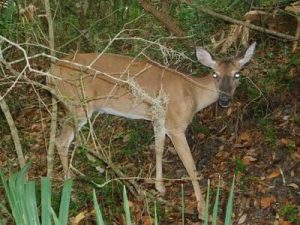
Legs Locked Up
When a deer’s legs are locked up after being shot, it typically indicates that the animal has experienced rapid neurological shutdown due to a well-placed shot, often targeting the central nervous system or vital organs.
This phenomenon, known as “locking up,” occurs when the deer’s muscles contract involuntarily, causing its limbs to stiffen and remain in a fixed position. For hunters, this sign is highly indicative of a successful shot placement that quickly incapacitated the animal, preventing it from fleeing or causing further suffering. Locked-up legs suggest a clean and humane kill, allowing hunters to approach the downed deer with confidence and begin the process of field dressing and meat retrieval.
Tail Up
If after you take a shot at a deer and it runs off with its tail still up, most likely you missed it. It will run a few yards and then look around and start doing what it was involved with before it heard the sound.

3. Study The Blood
Studying the color and quantity of the blood can give you a lot of information about where it was hit and the severity of the shot.
Pink Blood
If the blood from the wounded deer is pink with bubbles in it, it is a lung shot, maybe a double lung shot. The bubbles are the result of oxygen. The deer will not run for long and you will find it.
Red Blood
If the blood is deep red, it most likely is a shot in the heart. If it is a shot from a rifle, there will be a lot of blood and the deer will drop almost instantly.

Purple Blood
If the blood is purple or very dark red blood, chances are it is a shot in the liver or kidney. It is a fatal shot and the deer will bed down and die within 200 yards if it is not pushed.
Dark Brownish-Red Blood
If the blood is dark brownish-red, it might be a gut shot in the stomach or intestines. There could be a greenish or brown substance on the floor with a foul odor.
Spine Shot
The spine shot is a precise and effective technique used by hunters aiming to quickly and humanely take down a deer. Targeting the spine involves aiming directly for the vertebrae, usually behind the shoulder, to sever the spinal cord.
When executed successfully, the spine shot results in immediate neurological incapacitation, rendering the deer unable to move or feel pain. This approach is favored for its swift and ethical nature, minimizing suffering and ensuring a clean kill.
However, the spine shot requires a high level of accuracy due to the small target area, and a slight miscalculation can lead to less desirable outcomes, such as injuring the animal without incapacitating it. Therefore, hunters must possess sharp shooting skills and a deep understanding of deer anatomy to execute the spine shot effectively and responsibly.
Neck Shot
The neck shot is a challenging yet effective technique employed by skilled hunters aiming to swiftly and ethically harvest deer. This method involves targeting the deer’s neck, specifically the area just below the head where the spine meets the skull.
A well-placed neckshot severs the spinal cord or major blood vessels, resulting in rapid incapacitation and a humane kill. The neck shot is favored for its ability to drop a deer on the spot, minimizing the risk of the animal fleeing and suffering. However, it requires exceptional marksmanship due to the small target area and the need to avoid damaging valuable meat.
Additionally, the neck shot is not recommended for inexperienced hunters or those using less powerful firearms, as it carries a higher risk of wounding without a clean kill. Overall, while the neck shot can be a viable option in certain situations, it should only be attempted by hunters with the necessary skills and confidence to ensure a swift and ethical harvest.
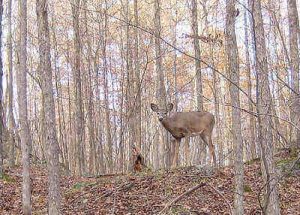
Hip Shot
The hip shot, also known as the pelvic shot, is a method used by hunters to incapacitate deer by targeting the pelvic region. This shot aims to sever the major blood vessels or break the pelvis, causing significant internal bleeding and hindering the deer’s ability to flee.
While the hip shot may not result in an immediate kill like a shot to the vital organs, it can effectively immobilize the deer, making it easier to track and dispatch. However, the hip shot requires careful aim to avoid hitting the bone and causing unnecessary suffering to the animal.
Additionally, it may not always result in a quick kill, especially if the deer can move to cover before succumbing to its injuries. Therefore, hunters should exercise caution and consider other shot placements whenever possible to ensure a humane harvest.
Artery Shot
The artery shot is a precise method utilized by hunters aiming to swiftly and humanely harvest deer. This shot targets the major arteries located in the deer’s neck region, specifically aiming to sever the carotid artery and jugular vein.
Striking these vital blood vessels results in rapid blood loss, quickly incapacitating the animal and leading to a swift and humane kill. The artery shot requires a high degree of accuracy and skill, as it necessitates hitting a small target area to achieve the desired outcome effectively.
However, when executed correctly, it offers a humane and efficient approach to deer hunting, minimizing suffering and ensuring ethical harvesting practices. Hunters should prioritize practicing marksmanship and shot placement to enhance their proficiency in executing the artery shot with precision and accuracy.
4. Find the Blood Trail
If you memorize the spot where you hit the deer, you can quickly find the initial spot and start looking for any signs of blood. Many times, you will not see any signs of blood. Don’t give up, just continue to look carefully. Look at the vegetation and trees close by as sometimes the deer will brush against the branches or vegetation. Remember the direction it ran and slowly follow the steps. You will, at some point, find blood signs that you can start the search.

5. Track the Blood Trail
After locating the blood, you should start tracking it. There are many items you can use to help map out the blood trail such as orange tape, surveyor’s tape, or toilet tissue.
6. Be Patient & Meticulous
Tracking a deer involves a lot of patience and meticulous search. Slowly find and follow the blood trail and you will eventually locate the deer.
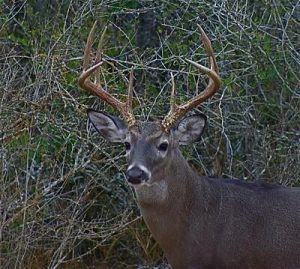
7. Involve Others
Most of the time, you will have hunting buddies and they will get involved in helping you locate the deer if it proves to be a complicated search.
8. Tracking Dogs
The last resort will be to use dogs to help you track down the deer. They don’t have to be tracking dogs. Dogs have a very good sense of smell and instinctively will follow a scent.
How To Track Deer After The Shot Tips
1. After hitting a deer, discipline yourself to remain quiet and stay in your position for some time. He might not be far away and any noise from you might push it away.
2. Mark the blood trail progressively using orange tape, surveyor’s tape, or some other indicator to establish the line of the deer’s travel route.
3. Never assume that you completely missed the target.
4. Look for signs of blood on vegetation, trees as well as the forest floor.
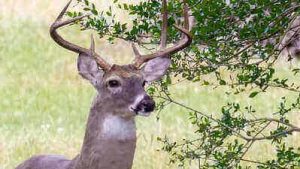
5. When tracking the blood trail, stay on the side and track it to avoid disturbing the sign.
6. Before you start tracking the blood, mark the spot where you shot the deer with a ribbon or another marker.
7. Deers that are shot in the gut have a habit of going to water. If you lose the blood trail, check the water streams in the area. It could have fallen beside or in the water and died.
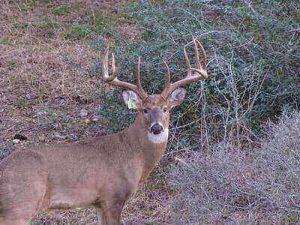
8. When you look at vegetation and tree branches, look at the height of the wound. Also, look at the bottom of the leaves as sometimes as the branch slides along the body of a deer, it is the underside of the leaf that picks up the blood.
9. As you search for the blood trail, look for broken twigs and displaced leaves.
10. Be on the lookout for clusters of ants, flies, and daddy longlegs. You might discover small drops of blood that these insects are feeding on.
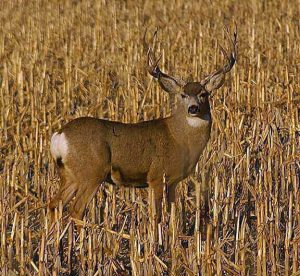
11. Listen out for birds like magpies, jays, and crows. Sometimes they will make sounds where the deer have fallen and died.
12. A dog can also help locate a deer. Their sense of smell is very good.
13. Also use your sense of smell as you look for the deer. Sometimes you will smell something that you just can’t see.
14. Many times when the blood trail ends, you will find the deer, not in the same direction of travel, but off to one side as it has “bled out”.

15. It can prove difficult to follow a blood trail in the grass. Carefully study the grass as it seems like the blade can avoid the grass and hit the soil.
16. As you follow the blood trail, be prepared for a second shot or to back off as sometimes it may still be alive and you may stumble upon it bedding down.
17. When a blood trail is difficult to see, get down on your hands and knees. It might be easier to spot the blood trail from this position than from standing up.
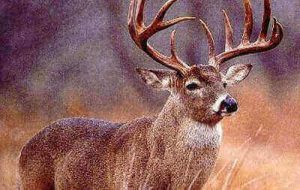
18. Sometimes your emotions can get the better of you as you search for the blood trail. If possible, have someone help you look for the blood trail who did not shoot the deer.
19. Use a compass and have one where you last saw the deer and another one where you last heard any noise from its flight. It just might help.
20. When tracking a deer after the shot and you jump a deer and it flags its tail, most likely it is not your deer. A wounded deer will seldomly flag its tail. But still, check it.
21. If you are part of a group tracking the deer, it’s best to spread out and be as quiet as possible.
22. If you shot the deer with an arrow and you retrieve it, inspect it. Check for hair, tallow, blood, etc. Your findings will give you clues on how to track the wounded deer.
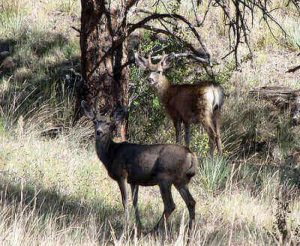
Items To Track A Wounded Deer
1. Flashlight
A high-powered flashlight can be very helpful in locating and following the blood trail. A flashlight is an indispensable tool when tracking a wounded deer, especially as daylight fades. Its bright beam pierces through the shadows, illuminating blood trails and clues left by the injured animal. With each step, the flashlight reveals vital signs, leading hunters along the path of the wounded deer. In the darkness of the forest, it serves as a beacon of hope, guiding hunters toward their quarry and ensuring a swift and humane recovery.
2. Backup Batteries
You will need backup batteries for your flashlight as you track the wounded deer blood trail. Backup batteries are essential items to carry when tracking a wounded deer, ensuring that your flashlight remains operational throughout the search. In the intense focus of the pursuit, it’s easy to overlook the draining power of the flashlight.
However, with spare batteries on hand, hunters can quickly swap them out, maintaining the bright illumination needed to follow the deer’s trail. These extra batteries provide peace of mind, preventing interruptions in the tracking process and increasing the chances of successfully recovering the wounded animal.
3. Orange Tape
Orange tape is preferred for many hunters to track the blood trail. Orange tape is a valuable tool for tracking wounded deer, especially in dense vegetation or low-light conditions. Hunters can mark the blood trail or significant sign with strips of brightly colored tape, making it easier to trace the deer’s path.
The high visibility of orange tape stands out against natural surroundings, aiding in navigation and ensuring that the trail remains visible, even from a distance. Additionally, marking the trail with tape can help prevent backtracking and confusion, allowing hunters to focus on following the deer’s movements steadily. With its simplicity and effectiveness, orange tape is a must-have item for any hunter’s tracking kit.
4. Surveyor’s Tape
A surveyor’s tape can be used to mark the blood trail. Surveyor’s tape, often brightly colored in fluorescent shades like orange or pink, is an essential item for tracking wounded deer in varied terrain. This durable and highly visible tape is designed to withstand outdoor conditions, making it ideal for marking blood trails or significant signs left by a wounded animal.
Hunters can tie strips of surveyor’s tape to branches, shrubs, or other landmarks along the deer’s path to create a clear and easily identifiable trail. The vivid colors stand out against natural surroundings, ensuring that the trail remains visible even in low-light conditions or dense vegetation. Surveyor’s tape is lightweight and compact, making it convenient to carry in a hunting pack or pocket, and its versatility makes it a valuable tool for any hunter in need of a reliable tracking aid.
5. Coleman Gas Lantern
A Coleman gas lantern can be used to help you track the blood trail especially when it gets dark. A Coleman gas lantern is a valuable tool for tracking wounded deer, especially when the search extends into the night. These reliable and portable lanterns provide a powerful source of illumination, casting a bright and steady light over a wide area.
With adjustable brightness settings, hunters can tailor the intensity of the light to suit the surrounding conditions, whether they’re navigating through dense woods or scanning open fields. The warm glow of a gas lantern can reveal subtle signs of a deer’s passage, such as disturbed foliage or blood spatter, aiding in the tracking process.
Additionally, the durable construction of Coleman lanterns ensures they can withstand rugged outdoor environments, making them a dependable choice for extended hunts. With their long-lasting fuel supply and sturdy design, Coleman gas lanterns are an indispensable item for any hunter’s gear collection when tracking wounded game.
The Bottom Line
How to track deer after the shot requires patience and being very methodical. You will need to follow a set routine and take out your emotions. In this article, we discuss how to track a wounded deer. Our goal is to help you become a better tracker of wounded deer after reading this article. If you want to be more successful in hunting deer, then read the best whitetail deer hunting tips.
